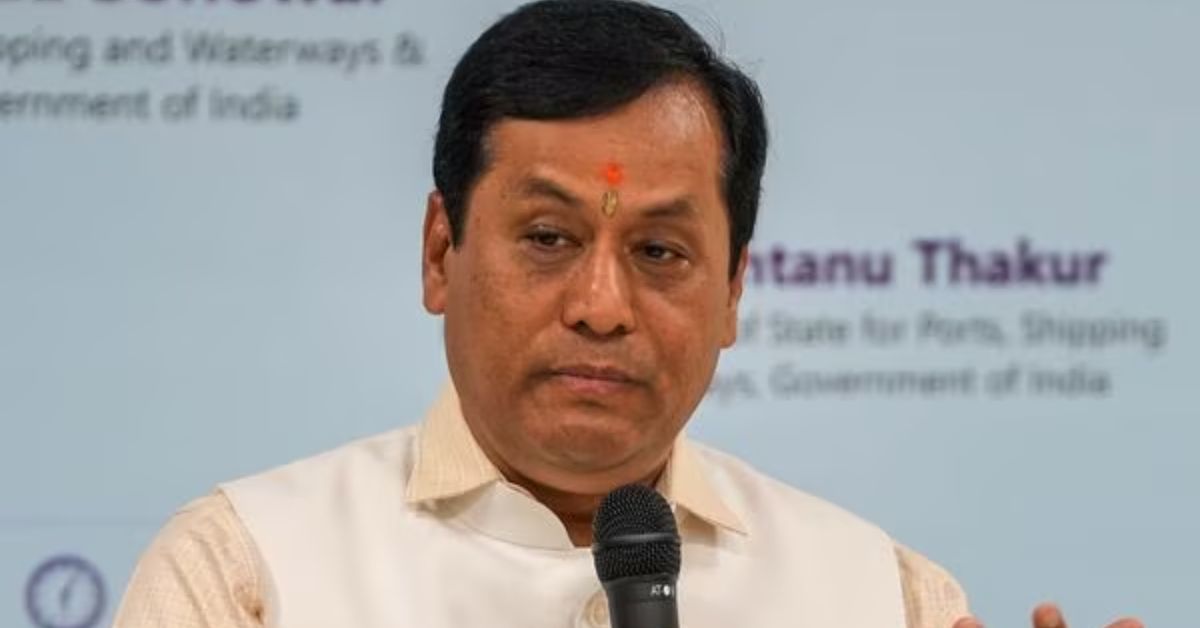Minister for Ports, Shipping and Waterways Sarbananda Sonowal said, Out of these, four projects valued at Rs 1,581 crore have already been approved and are under the bidding process, Sonowal said. The minister also detailed on the revival of Indian shipbuilding industry, transition away from fossil fuels and major tech intervention among others as major goals for the government.
Take us through the progress of asset monetisation in shipping so far.
Out of the 81 public-private partnership projects worth Rs 42,400 crore identified under the National Monetisation Pipeline, 14 valued Rs 10,750 crore have been awarded so far. For FY24, 20 projects have been identified under the NMP valued at ~Rs 6,761 crore, of which four projects valued at Rs 1,581 crore have already been approved and are under the bidding process. Some of the high-value projects we are focusing on include – Outer Harbour at Tuticorin Port worth Rs 7,055 crore, Multi Cargo Berth at Deendayal Port valued Rs 1,719 crore and Berth 7&8 at Syama Prasad Mukherjee Port having estimated project cost of Rs 865 crore.
56.5% of cargo in major ports are now handled through PPP mode and the government’s target is to reach 85% by 2030. We are doing this by converting the operations across major ports from the ‘service model’ to the ‘landlord model’. In 2023, Jawaharlal Nehru Port Authority became the first 100% landlord major port. The private investment has brought in contemporary technologies for better operations and also improved volumes of EXIM trade.
How important is the India-Middle East-Europe Economic Corridor for India’s shipping sector? What kind of investment are we looking at from India for this project?
The signing of the IMEEEC carries the potential to play a pivotal role in restoring India’s historical position as a leading maritime power globally. This corridor enhances India’s connectivity with vital economic regions and facilitates more efficient trade routes, thereby reducing transportation costs and time, which will be attractive to global shippers.
The government has been involved in mapping several aspects of the project to evaluate how trade with Europe and Africa will be best able to use this corridor. For this, investments of about Rs 80 lakh crore will be made in the Indian maritime sector during the period up to 2047.
How is the connectivity infrastructure of ports and shipping expected to evolve in the future, and what are the potential benefits?
Indian ports are increasingly focusing on seamless multi-modal connectivity, allowing for efficient cargo transfer between various modes of transportation – including waterways, trucks, and trains. Integrating different transportation modes will make it easier for businesses to move their goods, leading to cost savings and improved market access.
Decongestion of our ports and transportation networks will alleviate traffic bottlenecks and enhance the reliability of supply chains. New technologies will play a vital role in the future of the logistics sector. Intelligent sensors and automated systems will monitor cargo, equipment, and traffic in real-time, enabling proactive decision-making and predictive maintenance. Ports must prepare for the emergence of autonomous ships and drones and also should develop safe and efficient docking, loading, and unloading systems.
What are your top priorities for 2024?
Shipbuilding is a focus area. Currently, the maximum size of the vessels, which can be built in India in the public sector is 1,10,000 DWT, which is being further increased by Cochin Shipyard Ltd (which is a PSU undertaking) to build vessels up to 3,00,000 DWT. Private sector shipyards also can build cape-size vessels, comparable to some of the leading shipyards in the world. Goals for the Indian shipbuilding industry are varied. From facilitation of construction of river-sea vessels, inland vessels, barges and fishing vessels that run on alternative fuels to encouraging use of new technology, are our key priorities.
PM Modi talked about multiple shipbuilding and repair centres to be opened in various parts of the country. Where and when are these expected to open?
Cochin Shipyard is undertaking various projects on shipbuilding such as a new dry dock to augment shipbuilding and ship repair capacity including building specialised and technologically advanced vessels such as LNG Carriers, Aircraft Carriers, Drill ships, Dredgers and repairing of offshore platforms and larger vessels.
Alongside it is also building an International Ship Repair Facility (ISRF) in Kochi which will have workstations for repair of large vessels. CSL is also developing ancillary parks for suppliers, service providers, contractors along with hospitality hubs; this too is set to be completed by December, 2023.
Apart from this, CSL has already commenced operation of the ship repair facility in in Mumbai. Another new ship repair facility capable of handling large ships of around 250 metre is planned to be set up in Vadinar, Gujarat.
In respect of Inland vessel repair facility, the government has sanctioned a ship repair facility at Pandu, Guwahati on National Waterway -2 (river Brahmaputra) for Rs 208 crore in January 2023 and work is under implementation.







